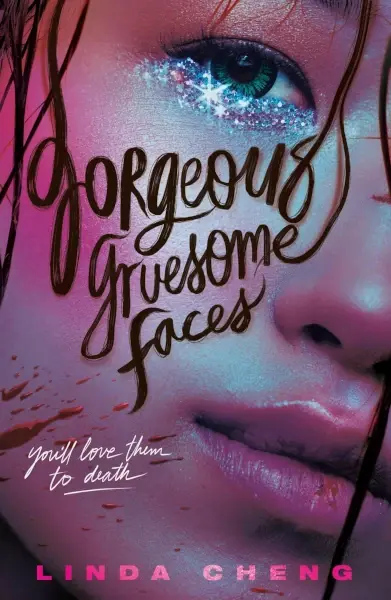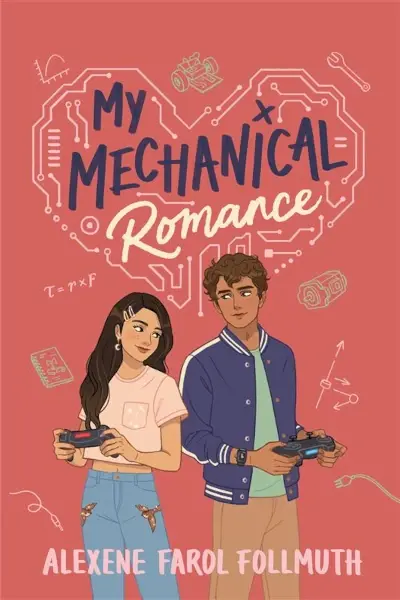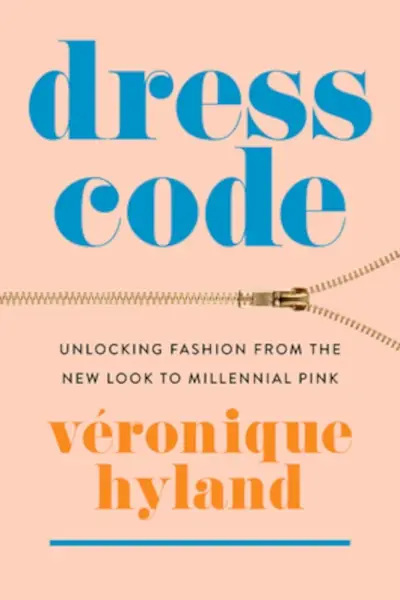Top reviews:

Partners Josie and Derek are no strangers to the many manifestations of grief: Derek suffered a childhood weighed down by the death of the older brother he never got to meet while Josie inherited from her grandmother the gift of spirit communication. Both are now struggling to keep their New Orleans-inspired restaurant Miss Sylvie’s afloat in the competitive Manhattan scene. Derek struggles with Josie’s insistence that a table in their restaurant be set aside for spirits he doesn’t even believe in; Josie bumps against Derek’s pessimism for their prospects of keeping Miss Sylvie’s afloat. At the encouragement of a therapist they decide to hire a manager and soon land on Stephanie. Derek is wary about her competence and character (“I’m not sure. Something felt off”) but Stephanie is enthusiastic and promises to bring the business to life with weekly happy hours and live music. This enthusiasm is misplaced and Stephanie soon proves to be as much of a threat as rising rent prices. In the midst of all this Josie meets with her absent father and is forced to accept that he will always prioritize Josie’s stepmother over her. When spirits convey the message that Derek’s mother is dying the pair must reckon with their histories. Buchwald’s story is one of making peace with the past embracing the complexities of grief and fighting to move forward. It is refreshing to find a narrative featuring ghosts that doesn’t give into the tropes of horror and that works to fully characterize each and every spirit who appears. There are points where the tone of the writing fails to match the more intense stakes of the story and more could be done to make the protagonists active agents—the novel’s strengths are its most sentimental moments and the characters readers will come to root for.
Read more...

Matalina “Mattie” Redgrave an introverted freelance writer is forced to quarantine for 14 days in an Aotearoa New Zealand hotel during the height of the 2020 Covid-19 pandemic. However Mattie calling herself “M” has fun corresponding via letters with another hotel guest who signs his missives “R.” Soon R is revealed to be the film star Raphael “Raph” Callan. Desperately evading an ex-girlfriend and a repulsive book (That Scarlet Beating Heart) slated for film adaptation Raph’s frayed nerves are soothed by M’s correspondence. The budding relationship develops rapidly encouraged on Mattie’s side by Daphne and friend Rin Butcher and on Raph’s by his “best mate” Luke Maston. After the quarantine ends and Mattie and Raph test negative for Covid they can finally meet in a way in person. But crises loom: Mattie is guilted into attending her brother’s wedding as a bridesmaid paired to a groomsman who bullied her in school while Raph’s former lover Edie Everette thinks that lies will win him back. Can the mischief-making team of Daphne Rin and Mattie again pave the way for love? Spears deftly uses letters emails and texts ranging in tone from witty to wise to illuminate various facets of the characters. In a group chat Rin teases “Mattie’s so thirsty she’s ready to fall in bed SORRY I meant in love after four letters…” But later Rin and Daphne fiercely contradict Mattie’s self-deprecating texts. Letter-writing levels the playing field between Mattie and Raph enabling them to find similarities such as insecurity about their own bodies. Spears promises in an author’s note that “there will be kissing” and she delivers but the usual graphic sex for the genre is humorously subverted; Mattie garbed in “Victorian widow” clothes has so many layers on that Raph can’t even feel her skin at first. The intriguing New Zealand setting though is neutralized by its timeframe as Covid-related lockdowns are strongly enforced in the country.
Read more...

Actually Kate who’s married to DCI Tom Mallory has two possibly three murders to solve: two in the present the other from the 14th century. An archeological dig has discovered a woman so well-preserved that the searchers can tell that her eyes were blue. Kate and her colleague Ivor Tweedy have been asked to examine the grave goods including a magnificent pearl which are being stored at an estate called Ravenswyck Court on whose grounds they were found. They’re invited to dinner at Finchley Hall home of Kate’s friend Lady Barbara Finchley-fforde to meet the archeologists from the University of East Anglia. Their leader Dr. Simon Sinclair is a brilliant backstabber willing to do anything to advance himself. The rest of the team includes Barbara’s adopted niece Dr. Celia Whybrew; Dr. Niall Nevin; and two Ph.D. candidates Mark Lambe and Tamzin Oliver. The owner of Ravenswyck Court is wealthy entrepreneur Alex Belcourt whose wife Carrie Holgate disappeared years ago. He hires Kate to discover the truth about Egemere Woman in honor of his beloved wife. The site is picketed by people opposed to disturbing the dead—even though the dig had already been suspended—and everyone is shocked to discover Sinclair lying dead in one of the trenches apparently murdered. Tom is well aware of his wife’s talents when it comes to murder investigations but his ambitious new DI Amy Cartwright is looking for credit herself. As the police check the alibis of the obvious suspects Mark Lambe finally gets his wish to investigate a nearby plague pit where the pregnant corpse of Carrie Holgate is found. With Tom busy on another case Kate has her hands full.
Read more...

When the author was 8 years old she developed bleeding in her brain stem that required surgery. Though the surgery was successful she was left partially paralyzed on her left side; she had to re-learn how to walk and talk with therapy and carried a lack of self-confidence with her into adulthood. As Goodson entered her 30s she was eager for love but still hadn’t found the serious romantic relationship she wanted. With the help of life coaches and friends she realized that her disability wasn’t the thing holding her back—it was her mindset. After years of frustration the author began working with Londin Angel Winters an intimacy coach who helped her to stop judging herself for her disability and lack of sexual experience (“I was judgmental of my history because I thought it was wrong. I thought it wasn’t how I was supposed to be doing life”) and start celebrating her differences. In this book Goodson shares the insights she has gleaned and frames them for all readers both disabled and not who believe that certain parts of their identity are “dating deal-breakers.” In the last section of the book the author summarizes the principal takeaways from her experience for readers to use on their own journeys. The tone of this book is empathetic and warm; like a good therapist Goodson instantly puts the reader at ease. As the author shares the lessons she’s learned they register as authentic because she doesn’t describe them as cure-all solutions that fix everything overnight. (She did not instantly gain a boyfriend but she did increase her confidence in how she presented herself to the world which was the real goal.) Often it feels like Goodson’s stories could be expanded upon to yield deeper insights—for example she describes the first and one of the last sessions with Londin but not much of their work in between. Still the overall message is bright and encouraging.
Read more...

Aria Nguyen is barely staying afloat balancing college classes in Washington D.C. with caring for her ailing Aunt Thu and managing the mounting medical bills. As the anniversary of her mother’s disappearance approaches Aria receives a voicemail from the Les Eaux Police Department with new information turning her longing into anxiety. By contrast Aria’s identical twin Caliste Ha leads a life of affluence as a Los Angeles fitness influencer. Her father Paul Ha owns a Vietnamese food empire. Despite her privileged background Caliste is worn down by the artificiality that surrounds her. Shocked to meet in Les Eaux the sisters investigate their mother’s disappearance and uncover secrets that shaped their family. They soon find themselves drawn into a town that’s haunted by mysterious deaths. Aria’s and Caliste’s alternating perspectives propel the novel punctuated by occasional chapters from the point of view of the Ghoul. As the story unfolds weaving in supernatural elements inspired by Vietnamese folklore the author’s detailed character development gradually reveals the connections and contrasts between the sisters. However her heavy focus on backstory often sidelines the central mystery slowing both the novel’s opening and its overall momentum.
Read more...

Cassidy has always known that someday she’ll help run Silver Stallion Ranch just like generations of Sterlings before her. Wilder Nash is a Hollywood heartthrob who’s trying to break out of commercials and high school prom-coms. Being cast as the lead in a historical Western miniseries might be his big break. The only problem: He can’t ride a horse. But he hopes that a stay at the ranch with Cassidy as his teacher will turn him into a believable rider. Over the course of their lessons the chemistry between the teens slowly builds. But can they take a chance on romance when they’re from two different worlds and their time together is finite? Emmel transports readers to Wyoming with its rolling fields winding streams and smells of dry earth and warm grass. Cassidy loves her home and her life but she recognizes how confining not having choices can be. Wilder wants to be serious but he doesn’t know what to say when there’s no script to fall back on. Cassidy and Wilder who are cued white feel like real people who are acting on their internal motivations and insecurities. While the growing romantic tension is engaging the ending wraps up a bit too quickly. Still this novel offers an appealing blend of love story and coming-of-age themes.
Read more...

The book opens as middling fashion reporter Irene Bigelow watches her old friend Felicity Wild suffer through her arraignment. The charges allege that while working as a professional escort Felicity manipulated two clients into naming her as beneficiary of their life-insurance policies before killing them. Reenie hasn’t seen Felicity in years but she knows in her gut that her old friend a bird-lover who’d wanted to be a biologist couldn’t have committed the acts of which she’s accused. When catching sight of Reenie in the courtroom Felicity mouths one message: “Go away.” Reenie doesn’t buy it. Thus begins her quest to find information she can use in an article intended to clear Felicity’s name. The only problem is that nobody wants her to proceed—not Reenie’s boss at the fashion magazine not Felicity’s handsome attorney and most especially not any of the people in Felicity’s life who might actually possess useful information. Even so Reenie won’t be deterred and she begins investigating Felicity’s personal history as well as the crimes no matter what it might cost her. Narrated in the first person the book follows Reenie as she knocks on doors tracking down Felicity’s family members and old acquaintances. The novel includes a preponderance of dialogue which though often witty and insightful slows the pace in a story meant to deliver heightened drama and suspense. Likewise the large cast of characters proves difficult to follow as most supporting characters fail to distinguish themselves. Despite the slow pace the author does an admirable job of creating a complex criminal scenario and portraying characters with nuanced feelings about old friendships while also highlighting the interplay between sex money and power.
Read more...

Why do all journalists in early 20th-century New York get to party with the Fitzgeralds? Morris Markey squired Zelda to the scandalous Midnight Frolic in Mariah Fredericks’ The Girl in the Green Dress (2025) and now Freddie Archer author of the Touch of Rouge column in Gotham magazine pours herself into a taxi and goes off to frolic with Zelda and her husband at the Biltmore Cascades to escape the midsummer heat. Unfortunately bootlegger Jake Haskell is murdered that same night bringing NYPD Detective Mike Sullivan to the Gotham office while Freddie’s nursing her latest hangover. Sullivan asks Freddie to describe the woman Haskell was with at the Biltmore and to keep her eyes open during her nightly pub crawls. That she does and she’s rewarded by witnessing an almost daily string of murders: at the Greenwich Inn (edgy bohemian vibe) King Tut’s (strictly for the butter-and-egg crowd) Club Monaco (ho-hum decor but fabulous music) and the alley behind designer Sophie Carmaux’s studio (gutter ambiance smells like fish). Having thrown over fiancé Nick Peters for suggesting that after their marriage they might move to Connecticut she’s happy to meet Brandt Abrams one of the few men she’s encountered who respects her taste for urban adventure. Mulhern gives Freddie a host of colorful characters to play off but her spirited heroine is clearly the star of the show.
Read more...

This first entry in a new series opens with Violet encountering Miller one summer night—he’s taking a walk and she looks out her bedroom window and spots him in the moonlight. Wealthy Violet a self-described nerd becomes a friend and safe haven for aspiring musician Miller who’s living in a car with his mother. The teens who are coded white form a fast and intense bond. The storyline jumps to high school where Miller makes some friends of his own and Violet tests the waters with the popular crowd. The presence of these new people in their lives complicates their friendship and delightfully pushes their feelings for each other to the surface. Even as they graduate from high school and pursue vastly different dreams they stick by each other. Readers will swoon over the romantic tension between the pair. Alongside the love story the novel tackles heavy subjects (some successfully) like homelessness sex work child neglect and abuse domestic violence chronic illness being closeted and financial strain. The novel contains some melodramatic far-fetched situations and includes sporadic diary entries that add little to the story but many readers will happily overlook these issues for the strong character arcs and central relationship.
Read more...

Jean Detrez the narrator of Belgian author Toussaint’s novel (in Polizzotti’s translation from French) has a lot on his mind. When the novel begins it’s 2016—specifically the time around the Brexit vote on June 23. Jean’s marriage to a woman named Diane is also coming to an end. A few months later flipping through his phone Jean comes across a racy photograph of a woman prompting him to think about the futurology retreat where it was taken. It’s through his reactions to fellow participants at that event that we learn more about Jean who works for the European Commission; he's alienated less by the snobbery than by “the casual familiarity” with which one attendee discussed prominent politicians. At the retreat he meets an Estonian woman named Enid with whom he has a brief emotional affair. Jean then muses on the aftermath of his father’s death later that same year which leads to him considering his ties to his brother and wondering if his father’s death corresponds to the end of an era—giving way to a time “in which excess slander and mendacity had taken over the public forum in which respect for the facts no longer had the inviolate character it had always enjoyed in the past.” There’s also the matter of his strained relationship with Diane and his warmer relationship with his first wife Elisabetta whose existence doesn’t come up until two-thirds of the way into the book. Jean is thoughtful in places with a couple of moving invocations of Stefan Zweig's life but it gradually becomes clear that his professional success doesn’t necessarily translate into an ideal personal or marital life. Toussaint has written a subtle but bracing exploration of his protagonist’s perceptions and failings.
Read more...

After Lizzie Wells loses her husband the professor of British literature finds the structure she needs to begin living the rest of her life in Victorian mourning customs. She goes on a “widow shopping spree for black clothes.” She puts a lock of her husband’s hair in a locket and wears a pendant marked with his fingerprint. She carries a tiny urn filled with his ashes in her handbag. She buys black-edged stationery and lets her students and colleagues know that she will not be answering email and only communicating via paper for “an undetermined time period.” Watching an independent 21st-century woman with a thriving career try to follow rules created for women whose entire identities were bound to their husbands could have made for a great novel but this is about as far as Lizzie gets in adopting Victorian mourning customs. She acknowledges as much when she says that “proper grief stationery black clothes [and] keepsake jewelry” are gestures toward the full package. Much like her heroine Reeves seems to think that gestures toward the premise she created are sufficient to fulfill its promise. Lizzie does occasionally remember to ask herself “What would a Victorian widow do?” But most of what she does throughout the entire novel is not what a Victorian widow would do. A Victorian widow would not go to work for example. A Victorian widow would not almost kiss her husband’s best friend in large part because a Victorian widow would not be sitting on a sofa next to her husband’s best friend unchaperoned in the first place. And if black leggings qualify as widow’s weeds then every woman who has ever taken a barre class is in deep mourning. The conceit becomes tiresome quickly but it does serve as a distraction from what is otherwise a lackluster and slightly preposterous love story. These complaints may seem pedantic but what could have been a fun crossover novel for fans of contemporary romance and historical romance is unlikely to satisfy either.
Read more...

Morgan has been a nomad all her adult life haunted by past failures and seeking new places to escape them by taking landscaping jobs around the country. But being followed by the ghost of Zach a one-time hookup is a new experience even for her. Then she meets Sawyer who’s been mourning his fiancée Kennedy and clinging to her ghost in the house in Los Angeles’ Silver Lake neighborhood they’d planned to redesign together. In trying to free both their ethereal companions and themselves Morgan and Sawyer agree to work together. Sawyer will let Morgan stay in the studio attached to his haunted house and help her figure out her ex’s unfulfilled wishes so Zach’s ghost can pass on; Morgan will landscape the garden Sawyer planned to create with his fiancée so Kennedy’s spirit can be at peace. As they crisscross Los Angeles in their quixotic quest Sawyer starts to develop feelings for the free-spirited Morgan even as he fears losing his tie to a happy past. Morgan meanwhile is thinking of putting down roots drawn to Sawyer as he puts himself back together. For a new love to grow both need to conquer their fear of loss. Despite long meditations on death and grief the novel has some funny moments thanks to Zach who used to be a surfer. The third act breakup and subsequent resolution bogs down the narrative’s early momentum and could have used some pruning. The L.A. setting is integral to the plot serving almost as a character; the location and its careful use in the narrative feel like a rarity in contemporary romance at the moment.
Read more...

At her best friend’s wedding to an actual knight in shining armor (the couple featured in Her Knight at the Museum 2024) art museum employee Rose Novak finds herself wishing she had her own “old-fashioned gentleman” to love her—someone like the man from the museum’s newly acquired portrait from 1818. Rose who dabbles in witchy pursuits decides to do a love spell for herself but never expects a man to suddenly appear in her apartment—especially not Henry Leighton-Lyons Duke of Beresford the man from the painting. In his era Henry was an astronomer researching the possibility of time travel in hopes of returning to a period when his wife was still alive. He’s exasperated to find himself in the future instead with this vexing—albeit attractive—woman. Thinking the spell must have gone wrong Rose agrees to help him find his way back. Unfortunately that means getting their hands on a historical artifact in the possession of a dangerous wealthy man. As Henry learns more about this new world he softens toward Rose and she discovers his protective kind heart making them both start to question if maybe the original spell actually was on the right track. This feel-good romance incorporates humorous fish-out-of-water scenarios and entertaining hijinks in a vibrant detailed Chicago setting. Rose and Henry are a wonderful showcase of the opposites attract trope as his scientific mind struggles with her penchant for the occult and she’s the sunshine to his grumpy. Some scenes feel more like filler rather than actually propelling the story and the plot’s trajectory borders on too obvious and therefore lacks tension but the book is so joyful throughout that it successfully makes for a fun fluffy escapist read.
Read more...

A doctor friend invites Jack to help with an autopsy in Essex Falls New York deep in the Adirondacks. Looking on the trip as a mini vacation for himself and his wife he accepts. The corpse had until recently been a healthy man who then developed rapid neurogenerative symptoms similar to Alzheimer’s disease before his death. Jack arrives with thoughts of doing a quick autopsy and then cooking steaks on a grill but more deaths occur. What’s going on? Is this the beginning of an epidemic? The story has three plot vectors: Jack; the Diehard Patriots a small band of disgruntled militia wannabes who harmlessly fire their AR-15s in the deep woods; and four “Netherlanders” hired by the Diehard Patriots to train them. But the alleged Dutchmen are in fact Russian bioterrorists with their own nefarious agenda: To poison the town’s water supply as a pilot project that would eventually allow Holy Mother Russia to wipe out millions of Americans. They set up a lab to brew a poison based on a theta prion gene as they convince their D.P. hosts they are brewing beer. The “proof-of-concept field trial” has begun but early results are uncertain. Meanwhile they have killed several locals using Novichok a Russian nerve agent. The plot is plausible but the story simply isn’t scary. The D.P.s mainly serve as a device to get the Russians into the story but they are otherwise feckless. And readers may not mind but there seems nary a sentence that Cook couldn’t make more concise. Surely he didn’t just phone this one in. That said Jack does fine autopsies as readers will discover in vivid detail. Early chapters engender more curiosity than dread among the good guys though eventually there is a violent payoff. Readers and Russkies know all the crucial details long before the authorities who summarize their findings in the epilogue.
Read more...

Betsy Pauly was an animal lover who liked nothing more than to help stray creatures: “If there was a cat or dog that appeared to be on its own she would round it up and get it rehabbed get it socialized and then have it adopted.” When Betsy died she left behind a document recounting her adventures; her husband Chips reached out to Braaksma a book coach and editor with the manuscript. This work explores both Betsy’s writing and what that writing has meant to Braaksma. She explains that she felt a connection with Betsy even though she herself is not particularly an animal person. This left her to wonder “why did she appeal to me so much?” As Braaksma puts it Betsy “had sass and she had spunk but she was far from perfect.” Betsy’s writing conveys what it was like rehabilitating strays and seeing that they went to good homes—she didn’t want to collect animals she wanted to help them. And she wasn’t shy about her disgust regarding animal neglect and abuse. The reader learns things from Betsy like how it can be difficult to place animals when they age beyond their kitten and puppy stages and turn “into teenaged Tasmanian devils who dig claw climb bite and break their way toward sedate adulthood.” The text also covers moments from Braaksma’s life such as her realization of how little one can “control the cries sounds and discomfort of another living thing.” The dual perspectives make for a refreshing blend. Betsy does however like convoluted sentences—she writes of one cat “Peter Pan on the other paw hemmed and hawed his way around us like a lost little black panther that took a wrong turn at the last watering hole.” Still the reader comes away with an understanding of an unlikely bond.
Read more...

Journalist and critic Morgan founder of the Chicago Review of Books makes his book debut with an engaging biography of Margaret C. Anderson (1886-1973) founder and publisher of the influential journal the Little Review. Born into a wealthy family in Indianapolis Anderson escaped to Chicago as soon as she could eager for a wider cultural world. She was befriended by Clara Laughlin who gave her a job reviewing books for her magazine the Interior. Soon a chance meeting opened up another opportunity: as an assistant to the editor of the well-regarded literary journal the Dial. In 1913 by then part of a flourishing arts community in Chicago she decided to launch her own journal. Working on a shoestring budget Anderson made the rounds of publishers and bookshops to solicit ads. She also convinced the piano company Mason & Hamlin to give her a piano in exchange for free advertising—a deal that she repeated even after the journal moved from Chicago to New York. Once an aspiring pianist Anderson always had to have her piano. The journal got a significant boost when Ezra Pound offered to become its foreign editor. He was looking he wrote to Anderson for an “official organ” where he T.S. Eliot James Joyce and other avant-garde writers could appear. Backed by the cosmopolitan lawyer John Quinn he could pay contributors. Anderson was enthusiastic but publishing the first chapters of Joyce’s Ulysses proved both brave and reckless at the cost of losing subscribers and leading to her trial for obscenity. Morgan recounts Anderson’s affairs with Jane Heap actress and opera singer Georgette Leblanc and Solita Solano among others. Her reputation endures as “a politically radical lesbian” and champion of modernism.
Read more...

This epistolary piece begins with the dream of motherhood as a snoozing woman envisions her future with ruminative anticipation. Flash forward slightly and Calatzis’ illustrations follow a racially and culturally diverse group of pregnant people as they anticipate what’s to come. Depicted (rather refreshingly) as hard work labor ushers forth a new era and these women become parents mothers for whom love possibility and growth—physical and otherwise—abound. Powers’ thesis is a simple one—the child makes the mother but it’s the latter who carries embodied proof of the life they’ll go on to share. The birthing parents cue largely female and while a stretch-marked stomach makes a notable appearance C-section scarring does not. Still the identities and bodies rendered throughout prove thoughtfully thoroughly diverse otherwise. The result not only offers context for the physical experience of motherhood— “wrinkles sags grays / new markings to cherish”—but also provides a template for the kind of authentic self-love that only inclusive visibility can cultivate. Picture books about parenthood are plentiful but few capture the corporeal experience with comparable care. Calatzis’ artwork a stunning combination of collage and embroidery underscores the act of making as being intentional and effortful an aesthetic message deeply compatible with Powers’ thoughtful empowering text.
Read more...

Captain Celestino in “A Vision of Plants” is a man about whom the neighbors tell hushed fearful stories: “He cut off a dwarf’s head. He hacked a woman in two. Over in the Congo he set fire to an elephant.…He keeps skulls in chests and charms snakes in the moonlight.” Now old Celestino potters in his garden as his home slowly crumbles mirroring his own decline. Though he’s apparently harmless grandmothers warn their grandchildren “If you don’t finish your soup I’ll take you to the captain’s house where he’ll chop you up like a grouper.” Celestino is none too innocent: He’s a veteran of the slave trade and in a particularly horrible moment he suppressed an onboard rebellion by murdering his human cargo. And he still harbors murderous thoughts: “Come to me children to me who has slit throats and who sleeps the sleep of the righteous.” In “Seaquake” one “Boa Morte da Silva the freight forwarder” does soul-sucking odd jobs like watching parked cars to earn a few euros. A former colonial soldier—his name means “Good Death”—he is anonymous lost in the system; Pereira hints that he may already be a ghost. Bruma the title character of the final story is enslaved but unbothered by that fact: “neither servile nor grateful just happy he found meaning in things even if he knew he was imprisoned. His simple life revolves around books and a cabin he built in the woods knocked down and rebuilt in several incarnations part of the mystery of being of the “tunnel between day and night between wakefulness and dream between death and life…” The three tales add up to a brilliant yet understated critique of a past that Portugal most likely hopes to forget.
Read more...

He may be famous and successful and wealthy and a Pulitzer and Nobel Prize laureate but everybody hates Aubrey Moon the writer socialite and Great Man who plans to spend $30000 to entertain 250 guests at the 75th birthday party he’s throwing himself next weekend. The question is: Who hates him enough to have offered Pamela Prym the call girl in Room 609 $10000 if she’d kill him before the party—and to have threatened her with instant death if she took the money but didn’t carry out the mission? It’s too late to ask Pamela because she’s hanged herself in her room. Incredibly though her correspondent makes the same offer to John Wills who already has ample reason to kill the man who caused his own father’s suicide. John who’s booked a room in the hotel and wangled an introduction to Chambrun on the grounds that he’s learning the hotel business—a cover story that doesn’t fool the wily manager—doesn’t want a murder on his conscience but isn’t in a position to return the payoff and doesn’t want to be killed either. More than whodunit the question of what-to-do-about-it drives this ebullient franchise debut by pseudonymous mystery veteran Judson Philips (1903–89). Editor Leslie S. Klinger supplies conscientious footnotes that describe how to make dry martinis identify Judy Garland and Toto explain what a call girl is and note that the phrase “a pansy inflection” is “an unfortunate anti-homosexual slur.”
Read more...

Talia Zargari loves math writing and drawing. She uses her codebook—filled with her observations deductions and artwork on quad-ruled pages—to decipher and navigate the unspoken rules of middle school. Talia is happy to still be best friends with Dash after other kids’ teasing about dating puts distance between them. She’s also thriving on the Chimeras the newly formed co-ed math team led by the smart and confident Leticia. The all-girls math team won a competition and Talia hopes the boys will now treat them with more respect. Art teacher Mr. Wayne shows Talia and her friends connections between math and art intertwining her two passions. But despite her successes Talia’s parents put excessive pressure on her to succeed so as not to jeopardize her future college applications—and they continue to bring up a mistake she made in her last math competition. Fortunately Talia learns that people are more complex than they initially appear: She once saw Leticia as effortlessly cool and smart but later learns that they share a lot of the same concerns and the girls forge a bond. Working toward their next competition shows the math team members that practice pays off and that there are lots of different ways to lead. Talia has tan skin and curly black hair Dash and Leticia read Black and background characters mainly present white.
Read more...
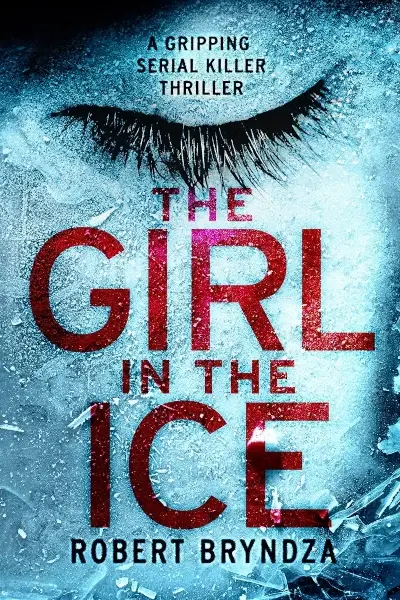
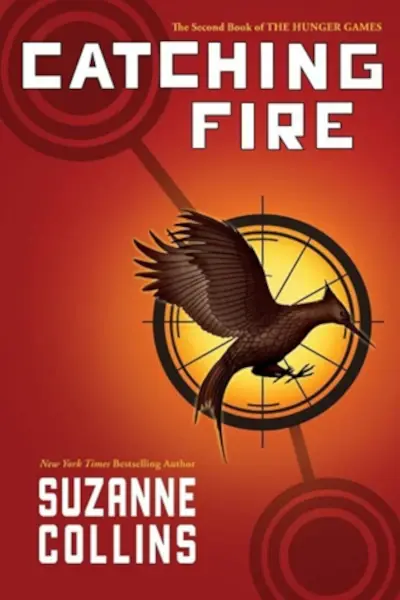
.webp)
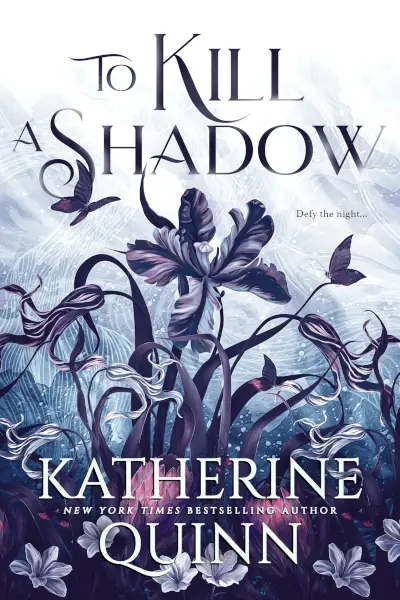
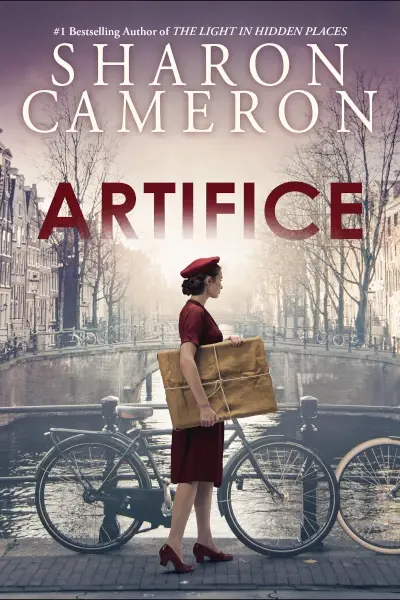
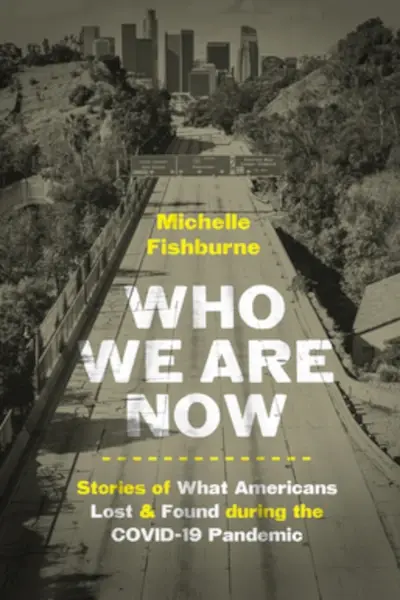
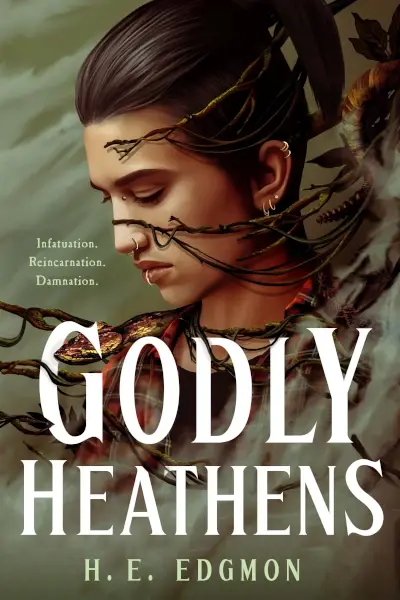


.webp)
